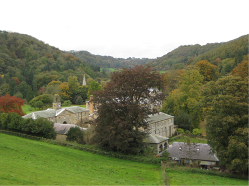
Coincidentally, the man who was eventually to become his sculptor, Matthew Noble, was born at Hackness in 1817, the son of stonemason Robert Noble, and served his apprenticeship with his father. His artistic abilities were spotted by Sir John, who arranged for him to study in London under renowned sculptor John Francis, with whom he lodged as a young married man. Sir John Johnston therefore fostered the careers of both William Smith and Matthew Noble. At the time of Smith’s death in 1839, Matthew Noble was 22 and, living in the same small village, it is likely that the two men were closely acquainted (Hugh Torrens, tells me that in a letter (1849) John Phillips notes that Noble “knew him [W.S.] familiarly at Hackness”)
Noble, then aged 33, was commissioned to produce the bust in 1850 for a sum of £50 - to commemorate the opening of the Museum of Practical Geology, South Kensington, in 1851. It is a replica of the bust that he made in 1848 for the memorial to Smith in St Peter’s Church, Northampton, where Smith is buried. The original and copy were based on the famous oil portrait of Smith ( Hugues Fourau, 1837) painted two years before Smith’s death. However, the great man looks a good deal younger in Noble’s sculpture - perhaps reflecting the artist’s his earlier memories of a more youthful Smith with whom he was acquainted.
Noble worked mainly in the Manchester area, and regularly in Leeds. He exhibited at the Royal Academy, London from 1845 (aged 28) and first came to widespread public attention in 1856 after winning the competition to design the prestigious Monument to the Duke of Wellington in Piccadilly Gardens, Manchester. His prolific commissions in bronze and marble included many notable Victorians, such as Michael Faraday and Sir John Franklin, including pictorial reliefs illustrating his disastrous and incompetent search for the north-west passage.